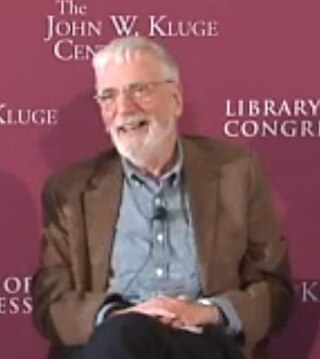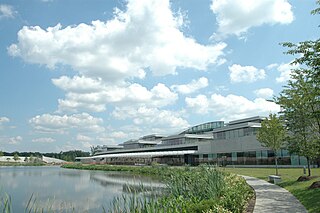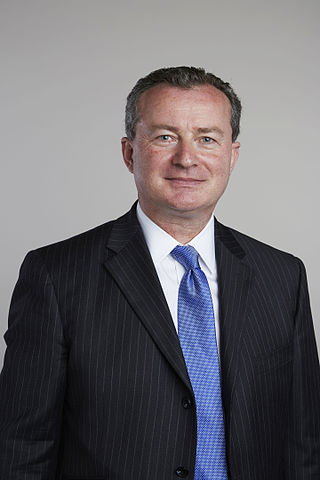
Dalhousie University is a large public research university in Nova Scotia, Canada, with three campuses in Halifax, a fourth in Bible Hill, and a second medical school campus in Saint John, New Brunswick. Dalhousie offers over 200 degree programs in 13 undergraduate, graduate, and professional faculties. The university is a member of the U15, a group of research-intensive universities in Canada.

W. Ford Doolittle is an evolutionary and molecular biologist. He is a member of the US National Academy of Sciences and a Fellow of the Royal Society of Canada and the Norwegian Academy of Science and Letters. He is also the winner of the 2013 Herzberg Medal of the Natural Sciences and Engineering Research Council of Canada and the 2017 Killam Prize.

Janelia Research Campus is a scientific research campus of the Howard Hughes Medical Institute that opened in October 2006. The campus is located in Loudoun County, Virginia, near the town of Ashburn. It is known for its scientific research and modern architecture. The current executive director of the laboratory is Ronald Vale, who is also a vice-president of HHMI. He succeeded Gerald M. Rubin in 2020. The campus was known as "Janelia Farm Research Campus" until 2014.

Axel Dieter Becke is a physical chemist and Professor of Chemistry at Dalhousie University, Canada. He is a leading researcher in the application of density functional theory (DFT) to molecules.
Gerald Mayer Rubin is an American biologist, notable for pioneering the use of transposable P elements in genetics, and for leading the public project to sequence the Drosophila melanogaster genome. Related to his genomics work, Rubin's lab is notable for development of genetic and genomics tools and studies of signal transduction and gene regulation. Rubin also serves as a vice president of the Howard Hughes Medical Institute and executive director of the Janelia Research Campus.

Eugene Wimberly "Gene" Myers, Jr. is an American computer scientist and bioinformatician, who is best known for contributing to the early development of the NCBI's BLAST tool for sequence analysis.
In evolutionary developmental biology, inversion refers to the hypothesis that during the course of animal evolution, the structures along the dorsoventral (DV) axis have taken on an orientation opposite that of the ancestral form.
Brian Keith Hall is the George S. Campbell Professor of Biology and University Research Professor Emeritus at Dalhousie University in Halifax, Nova Scotia. Hall has researched and extensively written on bone and cartilage formation in developing vertebrate embryos. He is an active participant in the evolutionary developmental biology (EVO-DEVO) debate on the nature and mechanisms of animal body plan formation. Hall has proposed that the neural crest tissue of vertebrates may be viewed as a fourth embryonic germ layer. As such, the neural crest - in Hall's view - plays a role equivalent to that of the endoderm, mesoderm, and ectoderm of bilaterian development and is a definitive feature of vertebrates. As such, vertebrates are the only quadroblastic, rather than triploblastic bilaterian animals. In vertebrates the neural crest serves to integrate the somatic division and visceral division together via a wide range novel vertebrate tissues.

Laurence Daniel Hurst is a Professor of Evolutionary Genetics in the Department of Biology and Biochemistry at the University of Bath and the director of the Milner Centre for Evolution.

Dr. Krishnaswamy VijayRaghavan is an emeritus professor and former director of the National Centre for Biological Sciences. On 26 March 2018, the Government of India appointed him as the principal scientific adviser to succeed Dr. R Chidamabaram. His term as Principal Scientific Adviser ended on April 2, 2022. In 2012, he was elected a fellow of The Royal Society and in April 2014 he was elected as a foreign associate of the US National Academy of Sciences. He was conferred the Padma Shri on 26 January 2013 and is also a recipient of the Infosys Prize in the life sciences category in 2009.
A Drosophila connectome is a list of neurons in the Drosophila melanogaster nervous system, and the chemical synapses between them. The fly's nervous system consists of the brain plus the ventral nerve cord, and both are known to differ considerably between male and female. Dense connectomes have been completed for the female adult brain, the male nerve cord, and the female larval stage. The available connectomes show only chemical synapses - other forms of inter-neuron communication such as gap junctions or neuromodulators are not represented. Drosophila is the most complex creature with a connectome, which had only been previously obtained for three other simpler organisms, first C. elegans. The connectomes have been obtained by the methods of neural circuit reconstruction, which over the course of many years worked up through various subsets of the fly brain to the almost full connectomes that exist today.

Jeffrey Connor Hall is an American geneticist and chronobiologist. Hall is Professor Emeritus of Biology at Brandeis University and currently resides in Cambridge, Maine.
Ming Li is a Canadian computer scientist, known for his fundamental contributions to Kolmogorov complexity, bioinformatics, machine learning theory, and analysis of algorithms. Li is currently a University Professor at the David R. Cheriton School of Computer Science at the University of Waterloo. He holds a Tier I Canada Research Chair in Bioinformatics. In addition to academic achievements, his research has led to the founding of two independent companies.

Amitabh Joshi is an Indian evolutionary biologist, population ecologist, geneticist and a professor at Jawaharlal Nehru Centre for Advanced Scientific Research (JNCASR). He heads the Evolutionary Biology Laboratory at JNCASR and is known for his studies on Evolutionary genetics and Population ecology. An elected fellow of the Indian Academy of Sciences, National Academy of Sciences, India, and Indian National Science Academy, he was also a J. C. Bose National Fellow (2011-2021) of the Department of Science and Technology. He served as the Chief Editor of the Journal of Genetics (2008-2014) and Editor of Publications of the Indian Academy of Sciences (2017-2021). The Council of Scientific and Industrial Research, the apex agency of the Government of India for scientific research, awarded him the Shanti Swarup Bhatnagar Prize for Science and Technology, one of the highest Indian science awards, in 2009, for his contributions to biological sciences.
Russell Jaye Boyd is a Canadian computational and theoretical chemist. He is Professor Emeritus at Dalhousie University in Halifax, Nova Scotia.
James "Jim" William Truman is an American chronobiologist known for his seminal research on circadian rhythms in silkmoth (Saturniidae) eclosion, particularly the restoration of rhythm and phase following brain transplantation. He is a professor emeritus at the University of Washington and a former senior fellow at Howard Hughes Medical Institution Janelia Research Campus.
Sherry Heather Stewart is a Canadian clinical psychologist. She is also a Professor of Psychiatry and Psychology at Dalhousie University and a Tier 1 Canada Research Chair in Addiction and Mental Health.
Arthur J. Robson is a New Zealand economist whose research interests include game theory and the biological evolution of economic behaviour. In the period between 2003 and 2017, Robson held a Canada Research Chair in Economic Theory and Evolution at Simon Fraser University, where he has been a University Professor since 2017.
Marta Zlatic is a Croatian neuroscientist who is group leader at the MRC Laboratory of Molecular Biology in Cambridge, UK. Her research investigates how neural circuits generate behaviour.
Sara Iverson is a professor of biology at Dalhousie University, and the Scientific Director of the Ocean Tracking Network (OTN).








